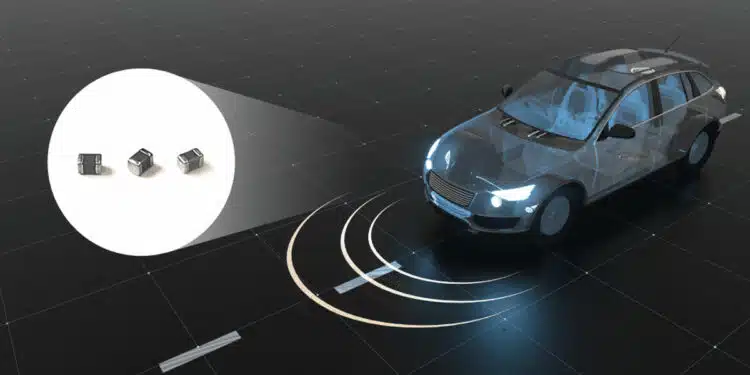Samsung Electro-Mechanics have developed and started mass production of MLCC capacitors, which feature a capacitance range of 22nF to 33nF at a rated voltage of 50V within a compact 0805 inch (2.0×1.25mm) size and a C0G temperature range (-55 to 125℃).
Samples of the CL21C333JBQ1PN# and CL21C223JBQ1PN# MLCC capacitors are available upon request.
As the trend towards miniaturization in modules for in-vehicle GPS antennas, smart (keyless) entry systems, and connected car systems continues to grow, the demand for smaller multilayer ceramic capacitors (MLCCs) is also on the rise.
In response to this demand, Samsung Electro-Mechanics has applied its proprietary ultrafine ceramic and electrode materials along with ultra-precise multilayer technology to reduce the size from the previous 1206 inch (3.2×1.6mm) C0G models to 0805 inch (2.0×1.25mm), while increasing the capacitance of the prior 10nF to up to 33nF. This meets the requirements for miniaturization and higher capacitance in these applications. Additionally, we plan to expand product coverage further by developing new models with capacitances of 47nF and 56nF.
| Samsung | Size(inch/mm) | Capacitance | Rated Voltage | TCC |
| CL21C333JBQ1PN# | 0805/2012 | 33㎋ | 50Vdc | C0G |
| CL21C223JBQ1PN# | 22㎋ | 50Vdc |
| Size (inch/mm) | Rated Voltage & Capacitance | ApplicationExample | ||||
| In MP | New | Under Dev.(2025.Q1) | ||||
| 50V | 50V | 25V | ||||
| 0805/2012 | 10㎋ | 22㎋ | 33㎋ | 47㎋* | 56㎋* | Communication Module for Network |
Application Example – Smart Key ECU
The Smart Key ECU (Electronic Control Unit) is embedded within automotive electronic systems, enabling communication with the Smart Key and exercising comprehensive control over system functions. As a result, there is an escalating demand for DC-blocking capacitors in the circuits responsible for generating LF signals and disseminating them around the vehicle through antennas to mitigate interference and ensure the effective, reliable transmission of signals.
Low Impedance, C0G, 0805 inch MLCC series is designed to meet the requirements of this application.
































